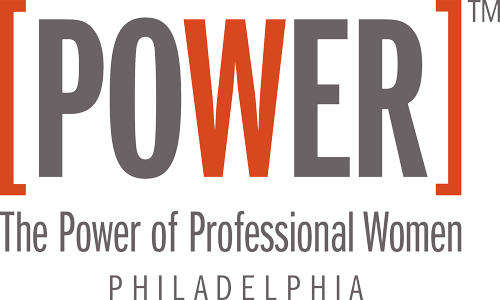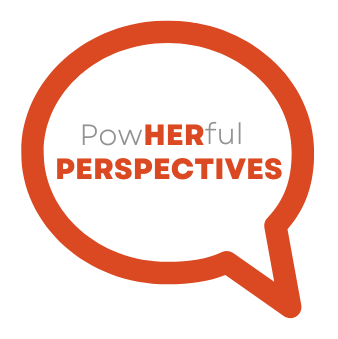Author: Adam Ross, Advisory Services Principle, Grant Thornton
You are a co-founder of Advisory Women at Grant Thornton, with a mission to enhance the recruitment, retention, and advancement of women into leadership positions within Grant Thornton’s Advisory Services practice. What motivated you to co-create this group to advocate for women in the workplace, and how has this advocacy evolved over time?
I have always been passionate about gender equity. It’s a value that was instilled in me by my family, friends and community. I’m also perpetually curious; I have a desire to learn from others who have different perspectives and experiences than me. Most importantly, I believe advocating for equity is the right thing to do.
Call it naiveté, but I just don’t understand why anyone would discriminate against someone who does not look like them or share the same cultural or religious background. That said, in my experience, the challenge is not necessarily intentional discrimination or bias; it’s a lack of awareness that bias exists — especially unconscious bias. We all have a responsibility to change our behaviors and educate others in order to create a more equitable playing field.
I’ve been privileged to work with my Grant Thornton colleagues to create programming, education and experiences focused on our women within Advisory Services and across our firm, as well as the workplace at large. In addition to participating in structured programming and events, my personal advocacy has evolved in two main ways: I’ve engaged in one-on-one mentorship and engaged men in discussions regarding gender equity.
I’m grateful for all the supervisors, mentors and sponsors who have supported and advocated for me; it’s my privilege, if not my responsibility, to pay it forward. I pride myself on my approachability and willingness to meet with anyone to help provide coaching, guidance and support of their professional and personal ambitions. This applies to anyone, at any level, in any department and any location. However, I am more intentional regarding my outreach and engagement with women, because I want to do my part to provide sponsorship and mentorship whenever I’m able to do so.
How do you believe your advocacy efforts have positively impacted the advancement and retention of women at Grant Thornton?
It’s important to recognize that it takes a village for most people to find their way, be successful, and progress in their career. As I’m writing this, I can think of dozens of people who have had a notable impact on my career and professional development, and I hope that at least that many feel that way about me. To that end, at any given time, I am personally looking for at least three people to learn from, and at least three people that I can invest my time in. This is one way I seek to uplift the talented women I am fortunate to call my colleagues.
I’ve been told that one of my greatest strengths is my ability to “connect the dots.” I have a strong network within and outside of my firm, and I enjoy bringing people together. A few months back, I was so happy to put that network to work for a colleague who was a new mother.
Shortly after she returned from maternity leave, she scheduled time to talk. She confided in me that she was struggling with being a new mother and all the responsibilities that comes with it, including continuously contributing at work with the same level of intensity as she felt she did prior to her leave. In fact, she was so concerned about her ability to strike a work-life balance, that she was contemplating leaving. She also just felt alone.
After letting her share her thoughts and feelings, I assured her that she was in good, plentiful company. I also reminded her that there is no standard path to career progression. Sometimes you are on a direct upward trajectory; other times you are moving horizontally or even taking a step back because of other elements of your life that make up the “pie chart of you.” At any given time, you only have 100% of yourself to give. You must divide that up between work, family and all of your other obligations. For short bursts, you can increase output to 110% or even 120%, but that is not sustainable, so you must make decisions on where you will spend your time and energy.
I also offered to introduce her to other working mothers across the firm. Some are newer mothers, while others had older kids like me (my lovely girls are 16 and 13!) She was so appreciative and happily accepted my offer.
We recently caught up and she was in a much better place. She connected with many of the individuals I introduced her to, and the conversations she had gave her confidence and equipped her with valuable guidance for balancing her personal and professional responsibilities without putting too much pressure on herself. While I may have been the catalyst, it was everyone else she spoke with that really made a difference.
Like I said, it takes a village.
In your experience, what role does male allyship play in creating a more equitable and supportive work environment for women, and how do you encourage other men to become advocates?
I grew up in the northeastern United States (my entire family is from the greater New York City area), so I like straight talk. I am not good at reading between the lines and prefer people tell me like it is. I was very appreciative of a colleague who, many years ago at a gender equity event, said something to the effect of “Women aren’t broken. We don’t need repairs, and we don’t need to be coddled.” That stuck with me. And while I need to continue to mentor, sponsor and advocate for women, I need to do so in a way that meets women where they are without presuming to know their full stories. Furthermore, it will be difficult to achieve the parity we all want without engaging men in the discussion.
Given the current gender make-up of leaders in the workplace, I believe it is men, not women, who must do more to change their behaviors and actions. They must be outspoken advocates of gender equity and be willing to expend personal capital to help advance women and others who may not have had all of the same opportunities as them.
I take more of a grassroots approach to this effort. I don’t stand at a podium waxing poetic about a man’s obligation to advocate for women. I lead by example. My hope is that the more men see me advocating for women, the more they will feel empowered to do so themselves.
In casual conversations, I talk about an article I read, or something I heard or learned at an event. I ask my male colleagues if they’ve thought about their role in gender equity. I bring up examples where others may have had unintentional or unconscious bias, or their actions may have been interpreted as aligned with historical gender norms.
One example was when I was with a male colleague, and I shared how there’s evidence to suggest women are more likely than men to be assigned administrative tasks such as note-taking. My colleague responded by saying that he often assigns note-taking tasks to the women on his team, but it’s because they do great work, and he trusts them more than others with that important task. He continued by saying that if a male colleague did a better job, he would ask him to do it. I asked if he’s told the women or the broader team why he asks them to take notes, and he realized that, while he praised them one on one, he had never shared in a group setting why he relies on women for this task. In other words, his intentions were good, but he wasn’t aware of the potential perceptions of his actions.
In another instance, I was talking with a different male colleague about the “like me” syndrome: the idea that it’s easier to engage people who look like you or share similar backgrounds or interests. My colleague indicated that he equally and happily speaks with all members of his team. Mind you, this colleague, like the teammate in my other example, is one of the nicest, most approachable, and social individuals I know. That said, I asked him to think about the last five or so discussions he had where he initiated outreach. Then, I asked him to count how many of these conversations were with men, and how many were with women. He realized he needed to be more intentional about building relationships with the women on his team.
Each of these conversations are examples of the power of “straight talk.” It doesn’t mean being combative — quite the opposite, in fact. It means being honest and forthright and inviting people to an important but friendly conversation about their role in fostering equity.
What are one or two things a male advocate can do to support women’s leadership that are easy and effective.
I believe there are several behaviors and actions a male advocate can take to support women’s development and leadership. These are in no particular order, and this is certainly not a comprehensive list:
- For those in a position of authority or seniority, think about people you currently coach, mentor and sponsor. If less than 60% of them are women, I urge you to share your tremendous experience, insights, perspectives and time with more of the talented women on your team.
- Intentionally engage women in discussion during team meetings. They likely have something beneficial to share but may not feel comfortable speaking up, particularly if one or two people are dominating the conversation.
- Be aware of situations where you may be speaking over a woman or not letting her finish sharing her thought. This is something I struggle with in conversation with teammates of all genders, solely because I have a lot rattling around in my head and I like to share my thoughts. However, I know in my heart that active listening is more important and impactful than speaking, so I try to be aware of this.
- Be proud of your advocacy and share what you are doing with others. I tell colleagues that it is acceptable for them to confidently, but not arrogantly, be their own public relations firm. I share that recommendation more often with women because, in my experience, men have an easier time doing this.
As a male advocate for women in the workplace, how do you navigate and address any potential resistance or skepticism from colleagues or stakeholders who may not initially understand the importance of gender diversity and inclusion initiatives?
Any time you are willing to advocate for anything, there will be those with differing opinions and others who are outright detractors. I’m not about to get into a fight about this, or most other topics, with anybody. However, I will engage in healthy discourse in order to open peoples’ minds to new ideas and encourage them to research the issue so they can develop more informed opinions.
Some time back, a colleague recommended I read: “That’s What She Said: What Men Need to Know (And Women Need to Tell Them) About Working Together,” by Joanne Lipman. This is an excellent book that shares great information on relevant case studies, office dynamics, conscious and unconscious bias, and how men and women think and approach things differently. My wife often jokes, “You can be 5% confident in something and say, ‘The answer is X’, while I can be 95% confident in something and say, ‘I’m not sure, but…’”. The book confirmed I am not unique in my behavior.
Sometimes resistance comes from the people you are trying to advocate for, and while it can be upsetting, it’s still our job to listen. For instance, after participating in a panel discussion on gender equity a few years ago, there was a post on the conference’s collaboration space to the effect of, “Why did they put a guy on stage to talk about gender equity? Now we need to hear from men about this?” There have also been times where it is inferred that my advocacy is outdated because it doesn’t consider those who are gender fluid or non-binary. It can be disheartening or demoralizing to receive criticism like this. However, while my advocacy may not be appreciated or even liked by some, I know that the more we all advocate for women, the better we will be. The key is to stay positive and be grateful for the opportunity to make an impact, while always staying open to new perspectives and information.
From a business perspective, what measurable benefits have you observed as a result of fostering gender diversity and inclusion, and how do these outcomes contribute to the overall success of the organization?
I’m a firm believer that diversity creates higher-performing teams that produce better outcomes, and I know that is backed up by results. I also know that to attract the best talent, our teams need to be diverse.
Another critical factor is that many companies want to work with organizations that look like them and embrace their culture and values. I love our firm’s culture and values and talk about them often. In particular, I often lean into our value of respect. Someone once defined it for me as: “We take what’s important to you and make it important to us.”
However, sometimes we haven’t sufficiently thought about what’s important to our prospective client before an interaction. There have been situations where a team that is not diverse attends a prospective client meeting and the prospective client group ——which includes women and people of color — takes exception to that.
If we struggle to present a more diverse team, then we know we have work to do to change that.


